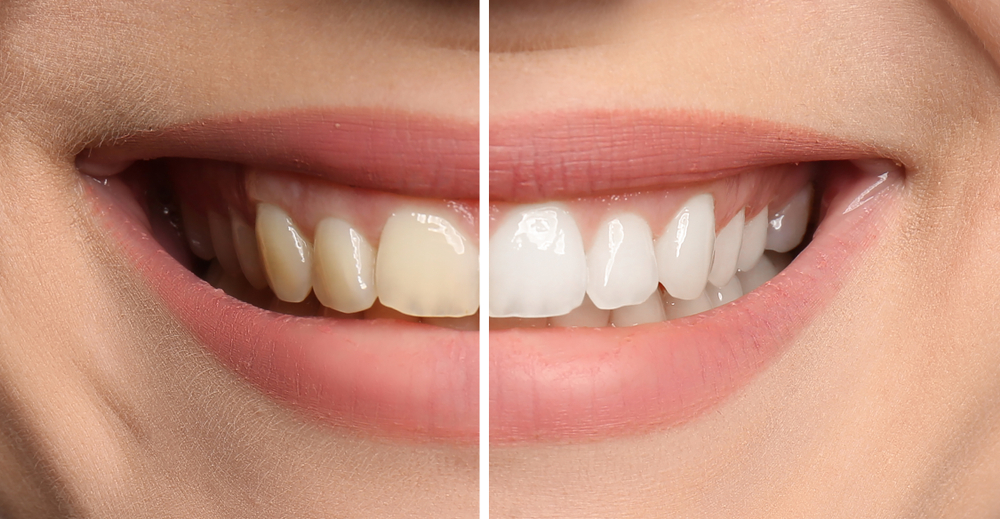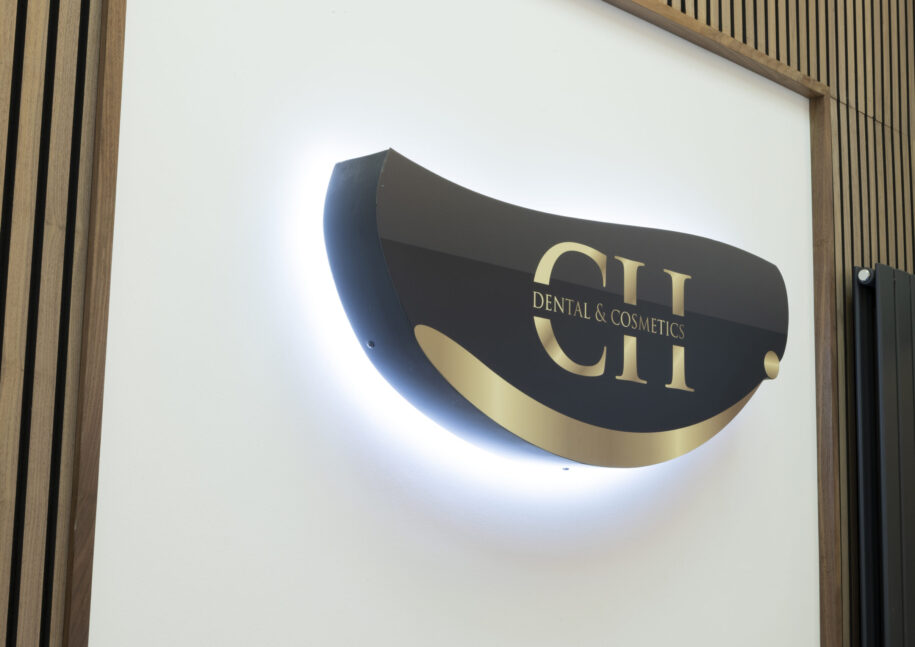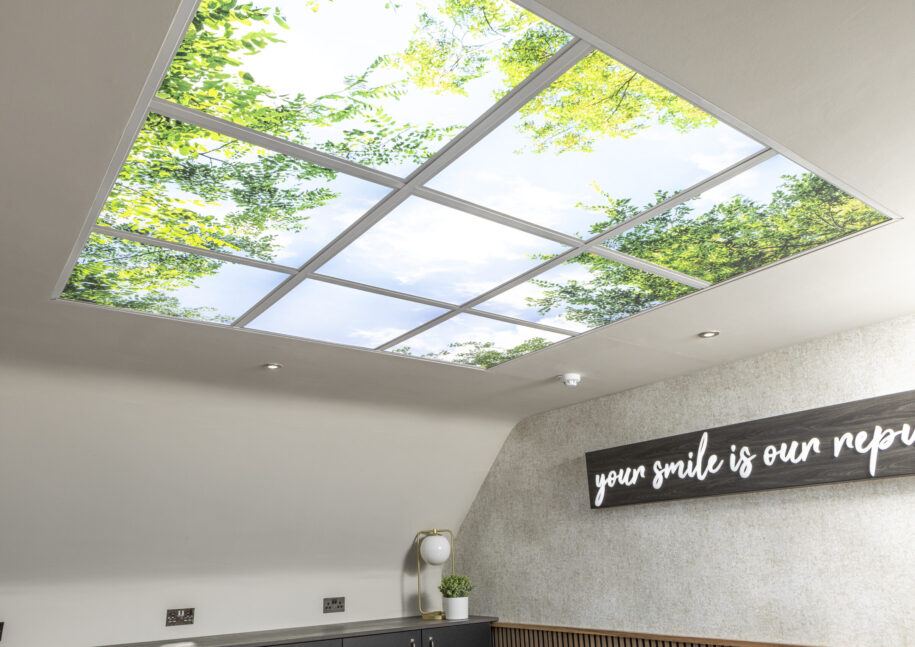The Science Behind Teeth Whitening Explained
- Home
- /
- Blog
- /
- Dental Advice
- /
- The Science Behind Teeth Whitening Explained
11 July 2024
The Science Behind Teeth Whitening Explained

Teeth whitening is a cosmetic dental procedure that involves using a whitening agent to remove stains and discoloration from the surface of teeth, resulting in a brighter and more youthful-looking smile. In the UK, teeth whitening is typically carried out by a qualified dental professional, either in-office or using a custom-fit tray for at-home use.
Understanding the science behind teeth whitening is important because it allows patients to make informed decisions about their treatment options and manage their expectations for results. The process of teeth whitening involves a chemical reaction that occurs between the whitening agent and the molecules that cause tooth discoloration. By understanding how this reaction works and the factors that contribute to tooth discoloration, patients can better understand why certain treatments may be more effective for their specific needs and what to expect in terms of results and potential side effects.
The Anatomy of Teeth
The basic structure of teeth can be divided into three layers:
- Enamel: This is the hard, outermost layer of the tooth that protects the tooth from damage and decay. Enamel is the visible white part of the tooth that we see when we smile.
- Dentin: This is the layer of the tooth beneath the enamel. Dentin is softer and more porous than enamel and contains tiny tubes that lead to the tooth’s nerve centre.
- Pulp: This is the innermost layer of the tooth, containing blood vessels, nerves, and connective tissue. The pulp provides nutrients to the tooth and also helps to sense hot and cold sensations.
Tooth discoloration occurs when the enamel or dentin of the tooth becomes stained or discoloured. There are two main types of tooth discoloration:
- Extrinsic discoloration: This type of discoloration occurs when the outer layer of the tooth (enamel) is stained by external factors such as tobacco use, coffee, tea, red wine, and certain foods.
- Intrinsic discoloration: This type of discoloration occurs when the inner layer of the tooth (dentin) becomes discoloured or darkened. Intrinsic discoloration can be caused by a variety of factors, including aging, genetics, medication, and trauma to the tooth.
Professional teeth whitening treatments work by using a bleaching agent to break down the molecules that cause tooth discoloration, resulting in a brighter and more youthful-looking smile. However, it’s important to note that not all types of discoloration can be treated with teeth whitening, and in some cases, alternative treatments such as veneers or dental implants Manchester may be necessary to achieve the desired results.
Causes of tooth discolouration
There are several causes of tooth discoloration, including:
- Aging: As we age, the outer layer of enamel on our teeth wears away, exposing the yellowish dentin beneath.
- Genetics: Some people are born with thicker or more porous enamel, which can make their teeth appear more yellow or grey.
- Poor oral hygiene: Poor brushing and flossing habits can lead to the build-up of plaque and tartar on the teeth, which can cause them to appear yellow or brown.
- Food and drink: Certain foods and drinks such as coffee, tea, red wine, and berries can stain the enamel of the teeth over time.
- Tobacco use: Smoking or using other tobacco products can cause yellow or brown stains on the teeth.
- Trauma: Trauma to a tooth can cause it to darken or become discoloured over time.
Understanding the cause of tooth discoloration is important for determining the best course of treatment. In some cases, improving oral hygiene habits or avoiding certain foods and drinks may be enough to prevent or reduce discoloration. However, for more severe cases of discoloration, professional teeth whitening treatments, veneers, or other cosmetic dentistry procedures may be necessary to achieve a brighter and more attractive smile.
How teeth whitening works
Teeth whitening is a cosmetic dental procedure that involves the use of a bleaching agent to lighten the colour of the teeth. The most common bleaching agents used for teeth whitening are hydrogen peroxide and carbamide peroxide. These agents work by penetrating the enamel and dentin of the teeth and breaking down the molecules that cause discoloration.
During the whitening process, the bleaching agent is applied to the teeth and allowed to sit for a period of time. As it breaks down the discoloration molecules, oxygen molecules are released, which further help to whiten the teeth.
There are two main types of teeth whitening treatments: in-office and at-home.
In-office teeth whitening is done at a dental office and typically involves the use of a stronger bleaching agent than what is available for at-home use. The procedure is usually completed in one visit, and the dentist will use a special light or laser to activate the bleaching agent and speed up the whitening process.
At-home teeth whitening involves the use of a bleaching agent that is applied to the teeth using custom-fitted trays. The trays are worn for a specified period of time each day, usually for several weeks, until the desired level of whitening is achieved.
The strength of the bleaching agent used for at-home whitening is usually lower than what is used in-office, which means that the results may take longer to achieve.
It’s important to note that not all types of tooth discoloration can be treated with teeth whitening, and in some cases, alternative cosmetic dental treatments such as veneers or dental bonding may be necessary to achieve the desired results. It’s also important to discuss your teeth whitening options with a qualified dental professional to ensure that you get the best results possible while minimizing the risk of side effects or complications.
To recap, teeth whitening is a cosmetic dental procedure that uses a bleaching agent to break down the molecules that cause tooth discoloration. There are two types of teeth whitening treatments available: in-office and at-home, each with its own strengths and limitations.
It’s crucial to understand that not all types of tooth discoloration can be treated with teeth whitening, and it’s always best to seek professional advice before attempting at-home treatments. A qualified dentist near me can help you understand the risks, benefits, and expected outcomes of teeth whitening, as well as offer alternative cosmetic dental treatments if necessary.
At Cheadle Hulme Dental, we are committed to helping our patients achieve their desired results while maintaining optimal oral health. We invite you to schedule a consultation with one of our experienced dental professionals to discuss your teeth whitening options and develop a personalized treatment plan that meets your unique needs and goals. Contact us today to schedule an appointment.
Get in touch
Categories
- Adult Braces
- Children's Dental Health
- Clear Aligners
- Composite
- Composite Veneers
- Cosmetic Dentistry
- Cosmetic Procedures
- Dental Advice
- Dental Anxiety
- Dental Bridges
- Dental Health
- Dental Hygiene
- Dental Implants
- Dental Insurance
- Dentures
- Research
- Gentle Dentistry
- Implants
- Invisalign
- News
- Oral Health
- Oral Hygiene
- Orthodontic Treatments
- Pain Free Dentistry
- Phobia
- Practice News
- Smile Makeovers
- Stain Removal
- Technology
- Teeth Straightening
- Teeth Whitening
- Treatment Offers
- Treatment Packages
- Veeners
- Your Dentist
Treatments
Taking your smile in a positive direction
When it comes to a friendly, caring, and professional dentist in Cheadle Hulme, you won’t find better than Cheadle Hulme Dental and Cosmetics. Why not book an appointment by contacting us directly at 0161 486 0743? We look forward to welcoming you.








